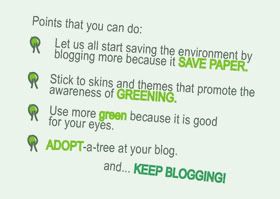Tuesday, July 22, 2008
Qns: How many cycles are there in the world and what are they used for? Are they helpful to us?
In ecology and Earth science, a biogeochemical cycle is a circuit or pathway by which a chemical element or molecule moves through both biotic ("bio-") and abiotic ("geo-") compartments of an ecosystem. In effect, the element is recycled, although in some such cycles there may be places (called "sinks") where the element is accumulated or held for a long period of time. There are many different types of nutrient cycles. They are water, oxygen, carbon, nitrogen, phosphorus, sulfur and hydrogen. In this post, I am going to talk about the water cycle.
The Earth's water is always in movement, and the water cycle, also known as the hydrologic cycle, describes the continuous movement of water on, above, and below the surface of the Earth. Since the water cycle is truly a "cycle," there is no beginning or end. Water can change states among liquid, vapor, and ice at various places in the water cycle, with these processes happening in the blink of an eye and over millions of years.
This cycle is made up of a few main parts. They are evaporation (transpiration), condensation, precipitation and collection. This is how the cycle goes. The Sun, which plays a major role in the water cycle, produces energy in the form of heat and causes the water in the water bodies such as oceans, rivers, canals and even the puddle in your backyard to evaporate. Transpiration is also involved as it is the process by which plants lose water out of their leaves. Transpiration gives evaporation a bit of a hand in getting the water vapour back up into the air. When the water gets heat, it forms water vapour which condenses in the cool air, changes into liquid and forms clouds.
As more and more water vapor cools into the clouds, the water droplets that form the clouds become larger and larger. These droplets get so big that the swirling winds in the atmosphere can no longer hold them up. The droplets fall from the sky. Precipitation is the term for the falling, condensed water molecules, which come down as rain, snow, sleet, or hail--depending on conditions in the atmosphere. When water falls back to earth as precipitation, it may fall back in the oceans, lakes or rivers or it may end up on land. When it ends up on land, it will either soak into the earth and become part of the “ground water” that plants and animals use to drink or it may run over the soil and collect in the oceans, lakes or rivers where the cycle starts all over again.


Sources:
http://wikipedia.org/
http://www.kidzone.ws/WATER/
http://www.units.muohio.edu/dragonfly/water/watercycle.shtml
http://www.biologie.uni-hamburg.de/b-online/e54/54d.htm
Environmentalist Blogged:8:27 PM
















